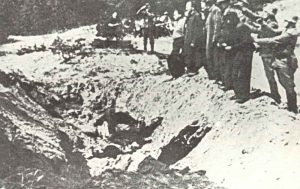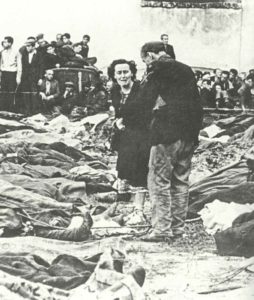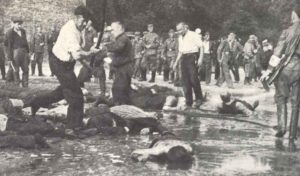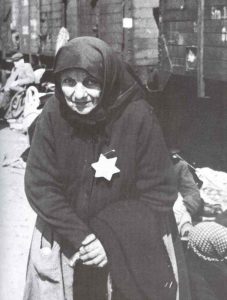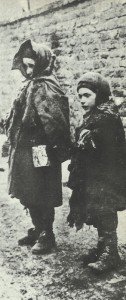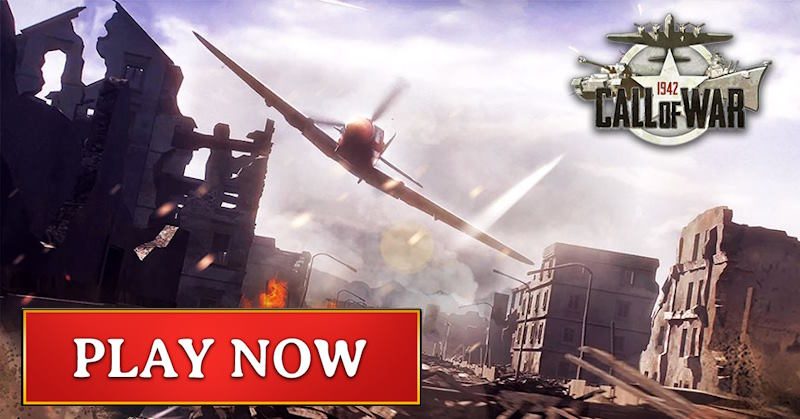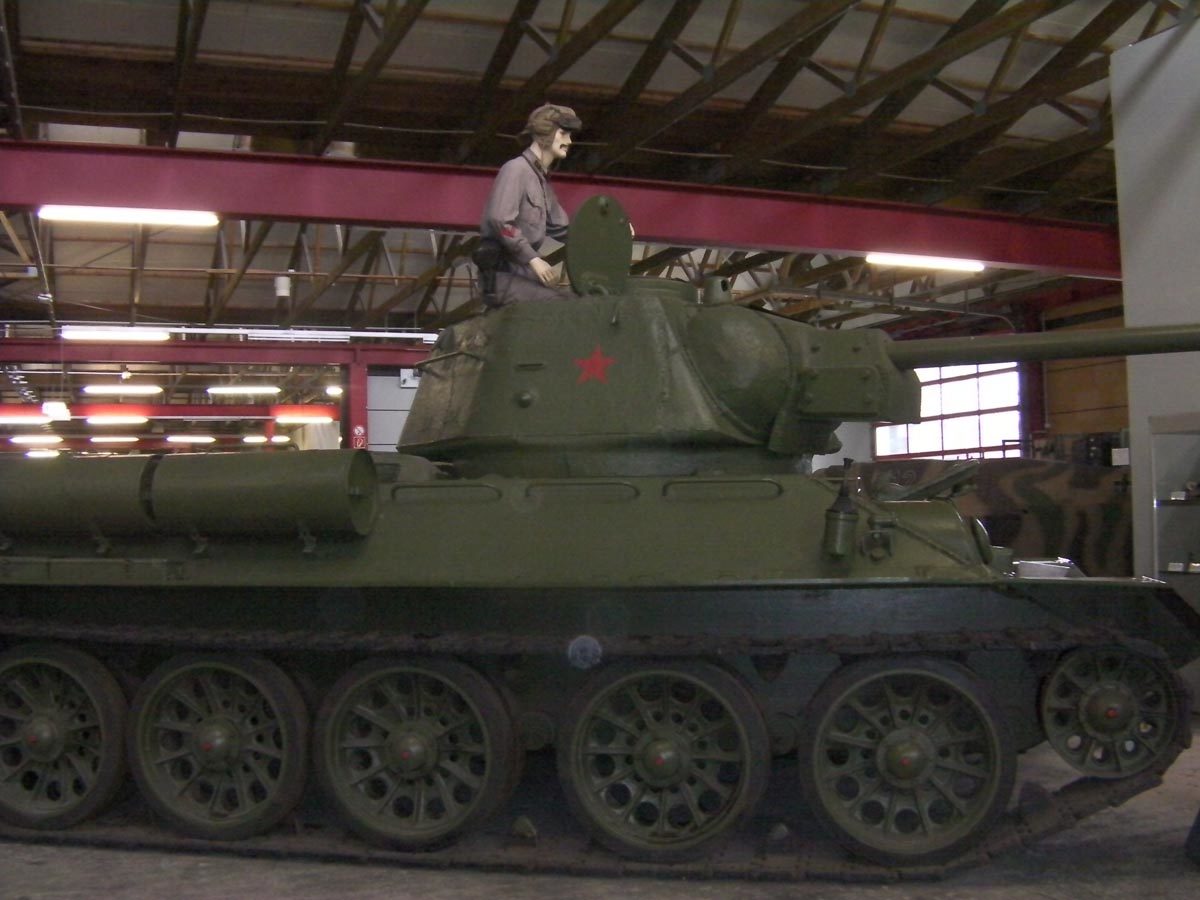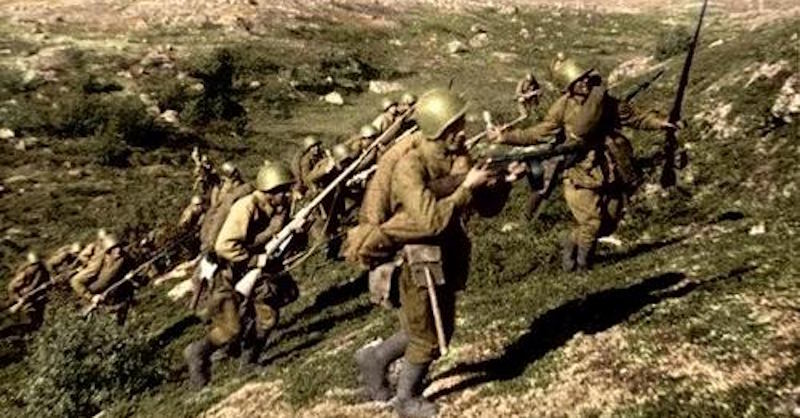The ‘Final Solution of the Jewish Question’ with the Beginning of the Russian Campaign.
An attempt at the chronological sequence of measures and decision-making for the Holocaust in the decisive period from June to December 1941.
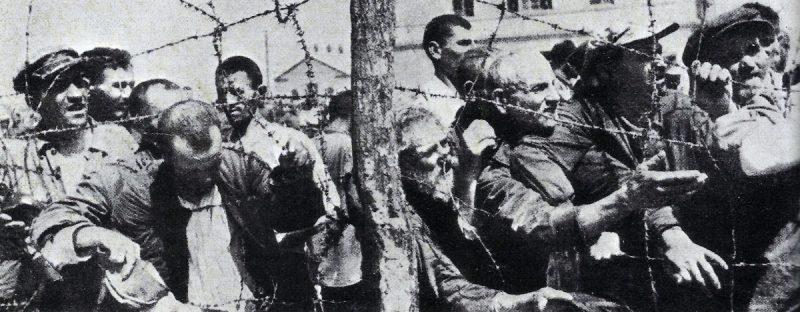
 Here to the previous part: Persecution of Jews in the Third Reich.
Here to the previous part: Persecution of Jews in the Third Reich.
Final Solution of the Jewish Question
Table of Contents
Already on January 30, 1939, Hitler had declared in his Reichstag speech: ‘I have been a prophet very often in my life and was mostly laughed at … I want to be a prophet again today: If the international financial Jewry in and outside Europe should succeed in plunging the peoples once again into a world war, the result will not be Bolshevization at the end and thus the victory of Jewry, but the annihilation of the Jewish race in Europe.’
The world war had by now become a practical reality, and Hitler’s decision of December 1940 to invade Bolshevik Russia in the following spring made him throw overboard the last, if any, moral or for whatever (political) reasons existing obstacles to committing genocide.
The conquest of European Russia would add many millions more to the hitherto unsolved problem of four to six million Jews under the previous German dominion. But a Russian campaign with its envisaged quick, victorious end would also make possible a huge population shift, together with a ‘racial cleansing’.
As a substitute for the Madagascar plans abandoned in the spring of 1941, there was now the possibility of deporting Jews far to the east, preferably behind the Urals. In the first half of 1941, these were the plans of Heydrich and Himmler for the so-called ‘Final Solution of the Jewish Question’.
War of extermination in the East
By May 1941, four ‘Einsatzgruppen’ (Task force), between six hundred and one thousand strong, had been formed by Heydrich to eliminate ‘subversive elements’ behind the front. Heydrich’s operational orders left it largely up to the commanders of these units to decide what was ‘subversive’. Thus, Jews, Gypsies, saboteurs, commissars, and Communist functionaries were considered dangerous elements. But he pointed out in particular that, according to the Führer’s aims, ‘Jewry is considered a reservoir of Bolshevism’ and must therefore be exterminated.
Since the conquest of Poland, Nazi rule became increasingly radical and the beginning of the Eastern campaign already pointed the way to genocide, but the final step to the Holocaust had not yet been taken.
Hitler’s role in these developments since September 1939 must have been decisive, but cannot be proven. Once he had set the ‘ethnic cleansing’ in motion, he could easily have left the planning and execution to Himmler and Heydrich.
Thus, on January 30, 1941, during his annual speech on the seizure of power, Hitler repeated, probably not by chance, the words of 1939 about the ‘guilt of Jewry for the world war’.
This led to ruthless action against Red Army commissars, Partisans or who were thought to be so, and the ‘Bolshevik Jew’.
The genocide of Soviet Jews, however, was not issued verbally to the ‘Einsatzgruppen’ by Heinrich Himmler until several weeks after the war had begun in Russia. Heydrich’s previous instructions, while typically imprecise, had been limited.
Himmler takes over behind the Eastern Front
Shortly after July 15, 1941, Reichsführer-SS Himmler learned that he had been given virtually an open mandate for police operations and security in the East. Hitler had declared in his orders ‘to exterminate everything that opposes us’ and ‘to shoot to death anyone who so much as looks askance.’
To use these powers, Himmler sent two strong SS brigades of 11,000 men into the Pripyet swamps. Within a week he had quadrupled the SS units operating behind the front, and the police battalions in the east were also reinforced to over 33,000 men by the end of 1941. That was then about eleven times as many men as the original ‘Einsatzgruppen’ had at the start of the Russian campaign. And since in the Nazi dictatorship ‘security’ also included ‘purges’, even more Jews were killed as a result.
While there were no explicit orders to murder, there was a complex interplay between ‘base’ and ‘leadership’ using camouflage terms to rewrite the unspeakable, where initiatives from below were praised from above and a spiral of radicalization emerged.
Behind the Army Group North, which had started from nearby German East Prussia, the actions of Einsatzgruppe A were extremely brutal already at the beginning. In Kovno, Lithuania, more than 2,500 Jews were shot as early as July 6. The whole thing was aggravated in the Baltic States by local pogroms, where the incited population could give free rein to their hatred of Jews.
Then, on August 1, 1941, the 2nd SS Cavalry Regiment in the Pripyets Marshes passed on an order from Reichsführer-SS Himmler to his units: ‘All Jews must be shot, and the Jewish women are to be driven into the marshes’.
The officers in charge ‘interpreted’ these orders differently, but the regiment reported successful ‘de-Jewification’ after two weeks. One of the commanders even took Himmler’s order literally and had to report apologetically that his men had driven women and children into the swamps, but that they were not deep enough to sink into them.
That Hitler must have been aware of the action was shown by one of his remarks to Heydrich and Himmler during an evening reception a few weeks later: ‘Don’t tell me we can’t send them into the mire.’
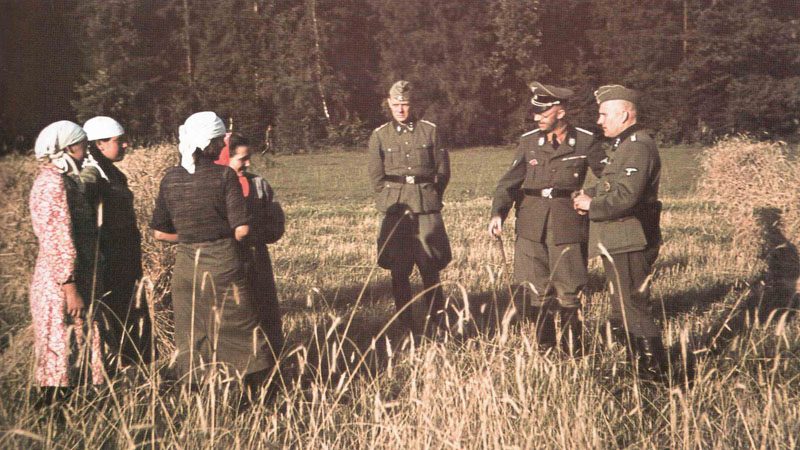
In any case, after Himmler’s visit to Minsk in mid-August 1941, the number of victims in Belarus increased enormously.
In January 1942, there were still about five million Jews living in the Soviet Union, although hundreds of thousands had already been murdered. At the beginning of 1941, Eichmann estimated the number of Jews to be deported in Europe, excluding those in the Soviet Union, at almost six million.
Jewish Star and the Decision to Deport
Heydrich, for his part, also demanded in August that Hitler deport the ‘Reich Jews’ to the East. But the Führer refused, presumably because this could lead to great attention in the Reich and also in the USA, which he still hoped to keep out of the war. He also knew that a deportation to Russia before a victory over the Soviet Union was not possible and that there was no more room in the ghettos of Poland.
After Stalin had ordered the deportation of hundreds of thousands of ‘ethnic Germans’ from the Volga to Siberia, however, Hitler changed his mind on the deportation of the ‘Reich Jews’ in mid-September 1941.
This decision also initiated the transition to genocide, because a victory over the Soviet Union still in 1941 seemed to be impossible already at that time and thus also the deportation ‘behind the Urals’.
Even though no one used the word, it was now clear to those involved what the so-called ‘Final Solution of the Jewish Question’ must mean.
After the emigration of Jews had previously been encouraged by the Third Reich, this also changed on October 1, 1941, when emigration was prohibited.
From October 15, the deportations of ‘Reich Jews’ by train from cities like Vienna, Prague and Berlin took place and there was still no plan for mass murders. However, there was actually no more room in the ghettos in the East, so local officials were allowed to order even radical measures as they saw fit. Thus, Jews deported to Kovno and Riga were immediately shot upon arrival in November.
On September 18, 1941, Himmler informed the Gauleiter of Wartheland that he would have to accept 60,000 more Jews in the Lodz ghetto. But the ghetto was already completely overcrowded by that time, and so there was permission from Berlin to kill Jews who were unable to work. The first of them were killed by gas in Chelmno at the beginning of December.
However, the regional murder actions were not yet part of a large program. Often the civil authorities in the occupied territories did not know about an ordered genocide. The General Commissar for White Ruthenia in Minsk, Wilhelm Kube, for example, still refused to kill ‘Reich Jews’.
Decision to commit genocide
In November 1941, however, the final decision on genocide must have been made. On November 5, 1941, Hitler said at a dinner in the presence of Himmler that he could not let ‘criminals’ live while the best men were falling at the front. ‘One had already experienced this in 1918’ – even if he did not use the word Jew.
Now it was time to take action, and on November 29 Heydrich sent out invitations to important civilian officials who were to be charged with the ‘Jewish question’. These included several state secretaries and some SS representatives. But these were apparently not informed by the invitation of a program to gas millions of Jews in special extermination camps. Nor had any official responsible for transportation matters been invited, and so these persons were in the dark as to the purpose of the meeting.
The meeting was to have taken place on December 9, but the Red Army’s counteroffensive in front of Moscow, the Japanese attack on Pearl Harbor, and Hitler’s declaration of war to the USA caused the conference to be postponed.
However, deportation of the Jews to the Soviet Union or behind the Urals was no longer an option under any circumstances given the now aggravated war situation.
One of the listeners had been Hans Frank, the Governor General of Poland. Four days later he transmitted this verbatim as a quotation to his local staff. He still believed in a deportation to the East and waited for the postponed meeting of Heydrich, which was to initiate the Holocaust as the Wannsee Conference of January 20, 1942.
While Frank was still waiting to see how the announced ‘extermination’ was to proceed, he was also already told that no one needed his Jews in the East and that he should instead take care of mass killings in his domain himself.
He estimated the number of Jews in the Generalgouvernement at 3.5 million and said to this, we can neither shoot nor poison so many. He probably had other ‘measures’ in mind for the extermination, such as starvation and disease in the overcrowded ghettos. At that time he probably had no idea of the death camps with gas chambers, which were soon to be erected in his territory.

References and literature
Illustrierte Geschichte des Dritte Reiches (Kurt Zentner)
Fateful Choices (Ian Kershaw)
Unser Jahrhundert im Bild (Bertelsmann Lesering)
Hitlers Tischgespräche im Führerhauptquartier (Henry Picker); in English: Hitler’s Table Talk




